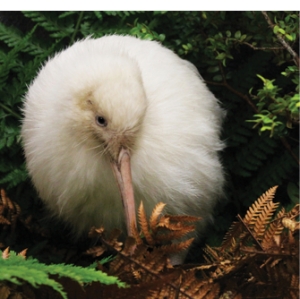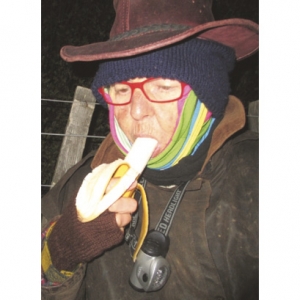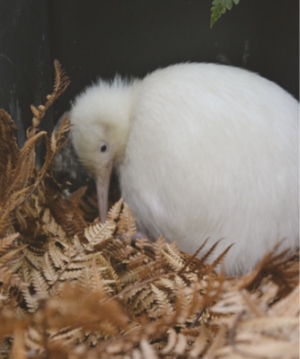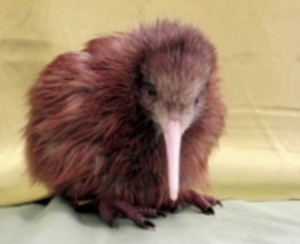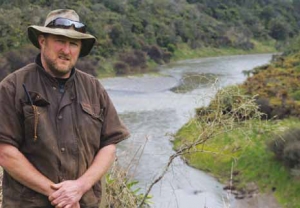Displaying items by tag: Kiwi
Pukaha farewells leading lady
Pukaha Wildlife Centre's summer was overshadowed by the death of their treasured white kiwi, Manukura, who was farewelled in a special service on January 9.
However, Pukaha’s captive breeding ranger Tara Swan says there have been "lots of positive, happy things happening in the bush since our dear Manukura left us”, including the hatching of her 'niece or nephew', a chick from Manukura's brother, Mapuna.
"The little white patch you can see on the tip of the chick's head is almost like a little throwback to the white feather gene of Manukura (someone called it 'Manukura's kiss')," she said.
"We have had so many yellow crowned akariki hatch, with 16 fledglings and five still in the nest across two pairs, and all our kaka have been successful this year, with five kaka fledged across the aviaries," Tara said.
These birds will be released at Cape Sanctuary in Hawke’s Bay later on in the year.
Kiwi call monitoring at Tawharanui
In New Zealand we have our special icon, the Kiwi. This is the only country in the world where Kiwi live. They make their burrows in the undergrowth and enjoy running about searching for worms and spiders.
However, with such a lot of predators now, it is wise to have Kiwi either in a safely fenced or pest monitored area. At Tawharanui we have just that right situation, with the Predator Proof Fence across the Tokatu Point at the termination of Tawharanui Peninsular, giving freedom to all native creatures within.
Kiwi breed around Autumn each year, once they are old enough. This is about two years old. They like to call at twilight which is the two hours after the sun goes down. So Kiwi Call Monitoring occurs when volunteers sit during those two hours usually 6 – 8pm, in June each year, silently listening for the calls.
Once the first call is heard then a count is commenced, slowly, sometimes reaching to over 20 times. These are usually the male birds with their shrill high whistles. Then occasionally a female will call with her lower guttural tones. Sometimes, all is then quiet. Perhaps they have found their mate!
Once the two hours is completed the volunteers collect together again at their base for supper and a chat about their evening event.
Sitting out in the dark at this time can be very cold in New Zealand. So good warm woolly and dry clothing is essential. Usually dry nights with little wind are chosen. The moon is rarely visible. Try it sometime – it’s a thrilling experience!
Patti Williams
Hands off our kiwi
Those Aussies are trying to steal our things again!
There have been claims that the Kiwi actually originated in Australia.
Happy Birthday Manukura
Three years ago staff at Pukaha Mount Bruce had a huge surprise when a kiwi egg hatched and out came a pure white kiwi!
Manukura is a very special white kiwi, and she turned 3 on May 3 this year.
A month of celebration activities was arranged. As well as a daily Manukura ‘fact hunt’ through the reserve there were a number of activities every weekend during that month.
Thanks to the Ten O Clock Cookie Bakery & Cafe in Masterton, there was a huge birthday cake in the kiwi house with a slice for every visitor.
Footnote: I called in to Pukaha Mount Bruce for a sneaky look at Manukura as she slowly walked around her enclosure in the kiwi house. Carefully she inserted her beak deep into the ground searching for worms and other tasty morsels. She is a big girl now and well worth a visit.
PS. The café at Pukaha has undergone a change and is now called Wild Café - new management but same staff –same delicious coffee and food.
Liz Brook
Manukura – a kiwi that flies
Wairarapa residents travelling around New Zealand and/or the world are being encouraged to take a Manukura soft toy with them. The idea is to take photos and send them back to the local newspaper. Of course you need to purchase a Manukura soft toy.
Check with Helen at Pukaha Mount Bruce [This email address is being protected from spambots. You need JavaScript enabled to view it.] and she will arrange to send you one.
If you are keen and have a Manukura toy with you, send your photos to This email address is being protected from spambots. You need JavaScript enabled to view it. The best photo will win a $1000 prize courtesy of a Masterton travel agency.
Unique kiwi
Kiwi deaths at Pukaha
Out there for the Long Haul
written by Lou Sanson, Director General, DOC).

